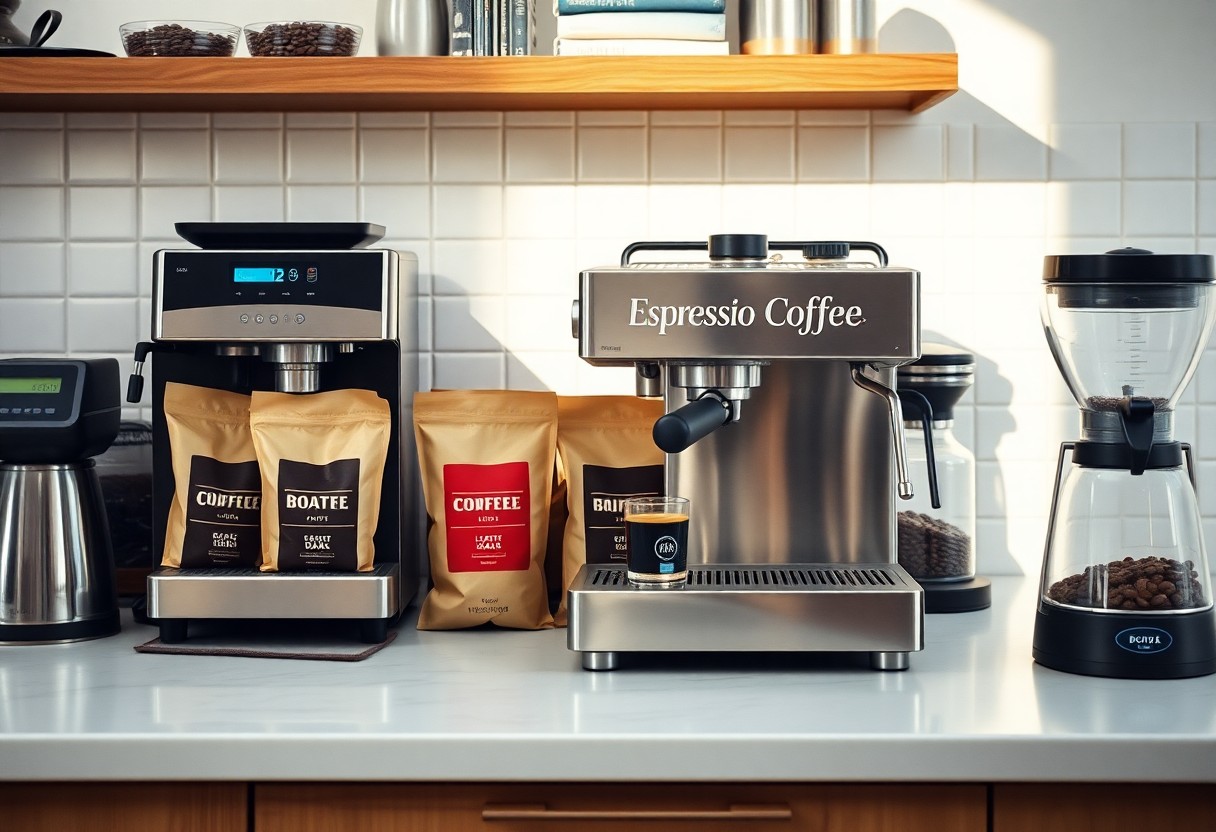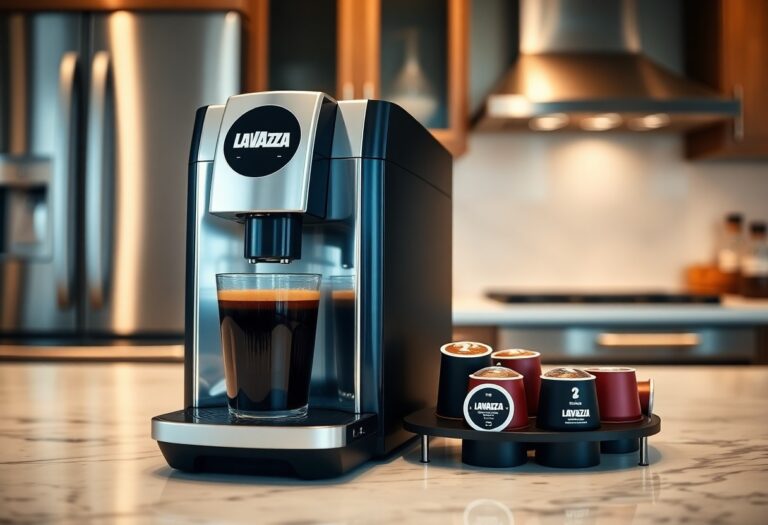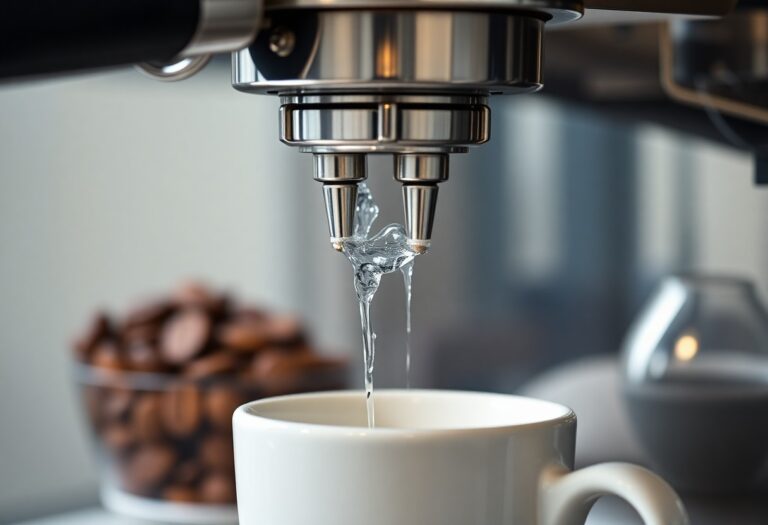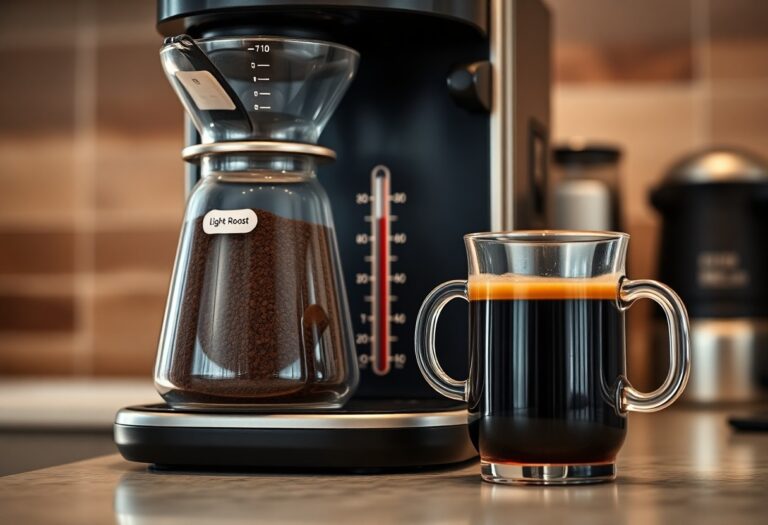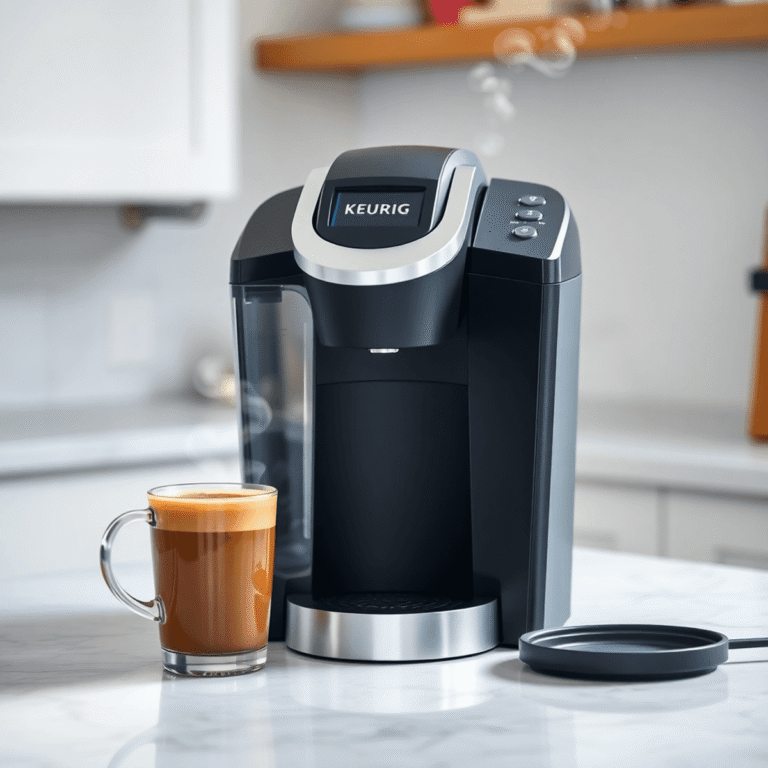What Coffee Do I Buy for an Espresso Machine – Shopping Guide
There’s a vibrant world of coffee waiting for you when you choose the right beans for your espresso machine. With so many options available, it’s necessary to understand what characteristics make a perfect espresso coffee. Look for freshly roasted beans with a fine grind and balanced flavors to elevate your coffee experience. In this guide, you’ll discover how to identify the best coffee types, choose the right roast for your preferences, and avoid common pitfalls when shopping for your espresso machine.
Key Takeaways:
- Choose high-quality coffee beans specifically designated for espresso, ideally with a medium to dark roast for optimal flavor extraction.
- Look for coffee blends or single origins that have tasting notes matching your preference, such as chocolatey, nutty, or fruity profiles.
- Consider the grind size; espresso should be ground finely to ensure proper extraction during brewing.
- Freshness is key; opt for whole beans and grind them just before brewing to maximize flavor.
- Experiment with different beans and blends to find the perfect taste profile that suits your personal preference and espresso machine’s brewing capabilities.
Decoding Espresso: What Makes the Perfect Coffee?
Perfecting your espresso experience begins with understanding the nuances of what makes coffee truly exceptional. Factors such as roast level, bean origin, and processing methods significantly influence your espresso’s flavor, acidity, and body. Each element contributes to a unique cup, tailoring it to your personal palate. By discerning these finer details, you can elevate your espresso game and fully appreciate the complexities of your brew.
The Role of Roast Level in Flavor Profile
The roast level of your coffee beans plays a pivotal role in shaping the flavor profile of your espresso. A light roast tends to present bright acidity and pronounced fruity notes, while a medium to dark roast yields richer, more chocolatey flavors with a fuller body. Most espresso aficionados favor medium to dark roasts, as they amplify the espresso’s inherent sweetness and create a delightful balance between bitterness and acidity.
Coffee Bean Origins: Understanding Terroir and Variety
Delving into the origins of your coffee beans reveals a fascinating connection between the terroir and the variety of the beans. Coffee beans from regions like Ethiopia are often characterized by floral and fruity notes, whereas Colombian beans may present a creamier mouthfeel with nutty undertones. Terroir—a term borrowed from the wine industry—describes how a specific location’s climate, soil, and altitude can deeply influence the flavor profiles of the coffee grown there.
Exploring these origins leads you to discover why certain beans are better suited for espresso than others. For instance, beans grown at higher elevations usually mature slower, allowing for a more complex flavor development because of the extended growth cycle. Varietals like Arabica are commonly favored due to their nuanced flavors compared to Robusta, which delivers harsher, earthier tones. Familiarizing yourself with these distinctions not only enhances your coffee selection process but also enriches your appreciation for the espresso you craft at home.
The Espresso Bean Connoisseur: Identifying Quality
Quality espresso beans can set the foundation for exceptional brews. Focus on the origin, roast level, and freshness to distinguish beans worthy of your espresso machine. Look for single-origin coffees known for their distinct flavor profiles, as they often offer the complexity you need for exquisite shots. Roasters that prioritize ethical sourcing and sustainable practices contribute to the overall profile of your espresso, ensuring a superior cup that not only tastes good but feels good, too.
Certification and Grading: The Mark of Excellence
Seek beans certified by reputable organizations, indicating high standards in quality and sustainability. Grading systems often categorize coffee based on attributes like aroma, acidity, and flavor profile. Specialty Coffee Association standards define top-tier beans as those scoring 80 points or higher on a 100-point scale. These certifications ensure you are investing in beans that will enhance your espresso with rich flavors and impressive aromas.
The Freshness Factor: How to Choose Recently Roasted Beans
Freshness can significantly influence the quality of your espresso. Look for beans roasted within the past two weeks to ensure optimal flavor. Factors such as the roast date being prominently displayed on the packaging can guide your selection. Well-roasted beans should produce a bright, vibrant cup, while older beans may taste dull and lack complexity. A simple freshness check can vastly improve your overall espresso experience.
When selecting beans, pay close attention to roast dates printed on the bag. Consuming beans within two weeks of roasting is ideal for maximum flavor retention, as the natural oils and aromatic compounds diminish over time. If possible, buy from local roasters to guarantee a fresher product, or explore online sellers offering quick shipping after roasting. This commitment to freshness ensures your espresso shots burst with flavor and aroma, elevating your coffee rituals to new heights.
Grind Size Matters: Finding Your Ideal Coarseness
The grind size of your coffee beans plays a pivotal role in the flavor and quality of your espresso. A finer grind increases surface area, enabling quicker extraction, which is vital for achieving that rich, bold taste in a short brewing time. Conversely, a coarser grind may lead to under-extraction, resulting in a sour or weak flavor. Fine-tuning your grind size is all about balancing these effects to match your specific espresso machine and personal taste preferences.
The Science Behind Grind Size and Extraction
Grinding coffee affects the extraction process during brewing by altering the flow rate of water through the coffee grounds. Finer grinds pack more tightly, which can slow down water flow, leading to over-extraction if brewing time isn’t adjusted. Conversely, coarser grinds allow water to flow freely, which can result in under-extraction. Finding the sweet spot involves experimenting with grind size to achieve a well-balanced shot that highlights the coffee’s natural flavors.
Adaptation for Different Espresso Machines: A Practical Guide
Your espresso machine type significantly influences the optimal grind size, as different machines possess varying brewing pressures and flow rates. For instance, high-pressure machines often require finer grinds, while lower-pressure models perform better with mediums to coarse grinds. Adjusting your grind size to match your machine’s specifications and your coffee preferences can elevate your espresso experience.
Modern espresso machines may come with recommendations for grind size, but personal experimentation remains key. Start with a finer grind and adjust gradually until you achieve the ideal extraction time, typically 25-30 seconds for a double shot. Maintain a consistent grind size to ensure comparability across different brews. If your shots often taste bitter, it’s time to dial back to a coarser grind, while a watery or sour shot might call for grinding finer. Keeping a notebook to track your grind settings and results can guide your journey towards the perfect espresso.
Flavors and Preferences: Tailoring Your Coffee Choice
Your personal flavor preferences significantly shape the coffee beans you choose for your espresso machine. Whether you savor a bright, fruity experience or lean toward deep, chocolatey notes, understanding your palate will guide your selection. Explore various roast profiles and consider sampling different blends. Curious about more guidance on selecting your coffee and espresso machine? Check out this Buying Guide: Coffee and Espresso Machines for insights that will help you find your ideal match.
Nuances of Flavor Profiles: From Fruity to Chocolaty
The flavor profile of your espresso can range from vibrant fruity tones to rich, chocolaty depths. Fruity varieties, such as Ethiopian Yirgacheffe or Kenyan beans, often showcase citrus and berry notes, creating a bright cup. In contrast, coffee like Sumatran Mandheling offers earthy and chocolaty flavors that provide a more robust taste experience. Classifying your preferences will help you navigate this exciting spectrum!
Blends vs. Single Origin: What’s Best for Your Palate?
The debate between blends and single-origin coffee is crucial for honing in on your espresso staples. Single-origin coffees boast distinct flavor profiles from specific regions, showcasing unique characteristics tied to their growing conditions. Conversely, blends combine beans from multiple origins, creating balanced flavors and consistency in your cup. Depending on whether you crave a nuanced single-origin experience or the smoothness of a well-crafted blend, your choice should cater to your taste preferences.
Single-origin coffees can transform your perception with unique flavors, making them a favorite for those seeking to explore diverse coffee profiles. For example, a light roast from Colombia might offer hints of caramel and nuts, while a dark roast from Brazil provides notes of cocoa and spice. Blends typically focus on achieving balance, combining beans to bring out the best flavors, making them versatile choices for everyday espresso. Ultimately, experimenting with both options allows you to appreciate the intricate world of coffee more fully. Highlighting different regions and roasting methods can lead you to discover your ultimate espresso preference!
The Price Factor: Balancing Cost and Quality
Finding the right balance between cost and quality is important for your espresso experience. You’re not just purchasing a bag of coffee; you’re investing in rich flavors, unique aromas, and an overall better brew. A premium coffee may come with a higher price tag, but the resulting taste and aroma can make a world of difference, highlighting why some brands justify their costs through superior sourcing and production practices.
Understanding Coffee Pricing: What You’re Paying For
Coffee pricing typically reflects factors like origin, processing methods, and certification, such as organic or fair trade. Specialty beans often command higher prices due to their limited supply, quality control measures, and the meticulous care taken by farmers. These aspects directly influence the flavor profile of your espresso, meaning a higher price might translate to a more enjoyable brewing experience and superior taste.
Budgeting for Quality: Investing in Your Espresso Experience
Setting aside a dedicated budget for quality coffee can elevate your espresso experience significantly. Investing in premium beans may initially seem extravagant, but the payoff in taste, freshness, and overall satisfaction is worth it. For a tangible example, consider that a bag of top-shelf espresso can cost around $15-$25, compared to $5-$10 for standard blends. When you consider that a single espresso shot uses about 20 grams of coffee, this per-use cost remains reasonable for the richness of flavor you’ll enjoy.
You might find that dedicating a bit more of your budget to quality coffee beans transforms your daily espresso ritual into an extraordinary experience. As the flavors deepen and evolve in your cup, you’ll appreciate the nuances brought forth by the origin and roasting process. Over time, this investment not only enhances your palate but can also lead to greater enjoyment and satisfaction, making each shot a moment to savor. By investing in high-quality options, you’re not just purchasing coffee; you’re creating lasting memories with every brew.
Conclusion
Conclusively, selecting the right coffee for your espresso machine is imperative for achieving the perfect shot. You should look for freshly roasted, high-quality coffee beans with a medium to dark roast profile that highlights bold flavors. Opt for beans specifically labeled for espresso to ensure the optimal grind and extraction. Pay attention to the grind size, aiming for a fine consistency that suits your machine. By following this shopping guide, you can enhance your espresso-making experience and enjoy rich, aromatic brews at home.
FAQ
Q: What type of coffee beans should I use for an espresso machine?
A: When choosing coffee beans for your espresso machine, look for beans labeled as espresso roast. These are typically medium to dark roasted, which enhances the flavors and oils necessary for a rich espresso. Arabica beans are popular for their smooth flavor, while Robusta beans provide a stronger, bolder taste and a thicker crema. A blend of both types can yield a well-rounded espresso.
Q: Should I opt for whole beans or pre-ground coffee for my espresso?
A: Whole beans are usually a better choice for espresso. Grinding your beans just before brewing preserves their freshness and flavor, resulting in a more flavorful shot. Invest in a good-quality burr grinder to achieve a consistent grind size, which is vital for optimal extraction in espresso brewing.
Q: How fine should the coffee grind be for espresso?
A: The coffee grind for espresso should be fine, resembling granulated sugar or slightly coarser than flour. This fine grind allows for the proper extraction of flavors during the short brewing time of espresso. If the grind is too coarse, the water will pass through too quickly, leading to a weak shot. Conversely, if it’s too fine, it can result in over-extraction and a bitter taste.
Q: Can I use flavored coffee in an espresso machine?
A: While it is possible to use flavored coffee in an espresso machine, it’s generally not recommended as the added flavors can interfere with the extraction process. If you prefer flavored coffee, opt for high-quality flavored beans that use natural flavoring, and be mindful that they may have a different brewing profile. Experimenting with flavored coffee can yield interesting results but may require adjustments to grind size and water temperature.
Q: How should I store coffee beans for optimal freshness?
A: To maintain the freshness of your coffee beans for espresso, store them in an airtight container away from light, heat, and moisture. A cool, dark place is best. Avoid storing coffee beans in the refrigerator or freezer, as this can introduce moisture and lead to staleness. Ideally, use your beans within a month of opening to experience their full flavor potential.

